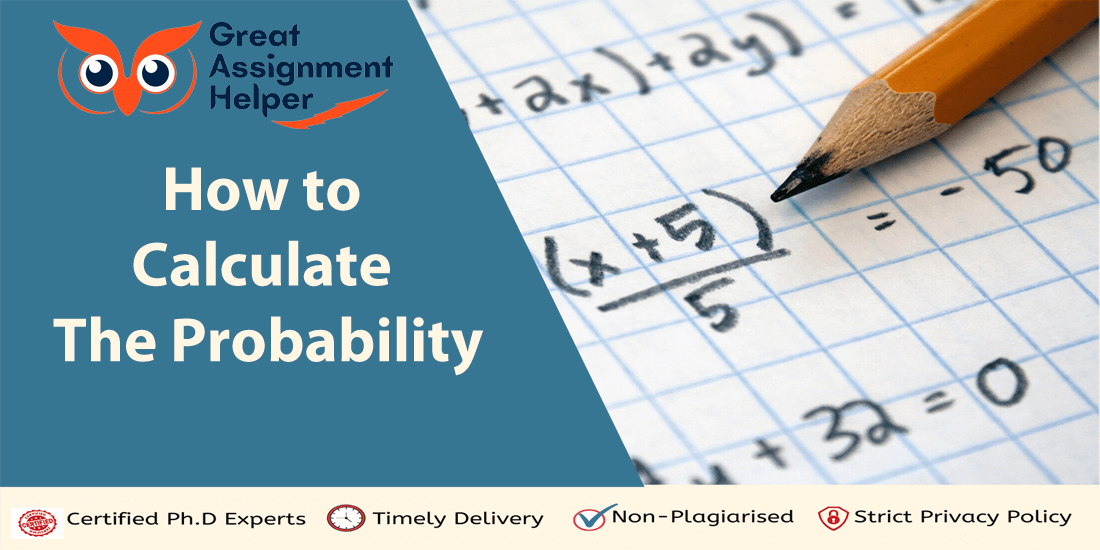
Listen To This Blog
Introduction
Probability may be defined as the likelihood of a specific event happening or not happening. Knowing how to calculate probability enables you to assess the likelihood of an outcome and make informed decisions. Probability is an essential concept in multiple fields, ranging from science and engineering to economics and social sciences. Understanding probability helps you work with data and make inferences about the world.
Real-life applications of probability include weather forecasts, financial risk assessment, and medical diagnosis, to name a few. Probability provides us with a framework to understand the uncertain world around us.
In this student’s guide, we will break down probability into manageable concepts and explore various methods for calculating probability. So, let’s dive into the world of probability and learn how to calculate probability accurately.
Understanding Basic Terms
A blue marble from a bag in which there are 5 yellow and 3 blue marbles? The total number of possible outcomes would be 8 and this is what the sample space for this experiment would be.
An experiment refers to an activity that results in an outcome, such as rolling a die or drawing a card from a deck. While probability is focused on the likelihood of a specific event happening or otherwise, sample space is the complete set of all possible outcomes possible in an experiment. An event refers to a specific outcome or a group of outcomes from the sample space. For instance, in rolling a dice, an event can be getting a number greater than 3. The outcome is the result of a single trial of an experiment, such as getting a 4 in a dice roll.
Understanding these basic terms is crucial in probability calculation. It helps to identify the possible outcomes, events and sample space, which makes it easier to determine the probability. So next time you come across probability calculation problems, pay attention to the experiment, sample space, event, and outcome. Since practice leads to perfection, even in probability, proper practice would improve understanding of the subject. Now let's move on to calculating the probability of a single event.
Calculating Probability of a Single Event
Probability is a fascinating subject that has vast applications in daily life, and if you need any assistance with assignments related to it, such as probability theory or solving probability problems, you can always seek assignment help. From weather forecasts to medical diagnoses, probability plays a crucial role in decision-making. Simply put, the probability is the likelihood of anything happening. The study of probability enables us to predict outcomes more accurately. Therefore, it is an essential math skill that every student should learn.
Understanding basic terms:
Before we delve into calculating probability, it's essential to understand some basic terms. An experiment refers to an activity that produces an outcome, while a sample space consists of all possible outcomes of an experiment. An event is an outcome or a collection of outcomes, and an outcome refers to a result of an experiment.
Methods of Calculating Probability
There are three main methods of calculating probability. The classical method involves determining theoretical probability based on equally likely outcomes. The relative frequency method involves calculating probability based on the frequency of an outcome occurring. The subjective method involves calculating probability based on personal judgment or experiences.
Classical method:
Suppose there are six outcomes in an experiment, and all of them are equally likely. The probability of an event is calculated by dividing the number of desired outcomes by the total number of possible outcomes.
Relative frequency method:
Suppose an experiment is conducted 50 times, and an event occurs 20 times. The probability of the event is calculated by dividing the number of times the event occurred by the total number of experiments conducted.
Subjective method:
Suppose you are asked to predict the probability of a particular team winning a game. Based on your knowledge of the team's performance, you predict a probability of 70%.
Calculating Probability of Multiple Events:
In calculating the probability of multiple events, it is essential to consider whether they are independent or dependent events. If events are independent, the probability of both events occurring is calculated by multiplying the probability of each event. If events are dependent, the probability of both events occurring is calculated by multiplying the probability of the first event by the probability of the second event given that the first event occurred.
Permutations and Combinations:
Permutations refer to the arrangement of distinct objects, while combinations refer to the selection of objects from a set. The permutations formula is nP r = n!/(n-r)!, where n is the total number of objects, and r is the number of objects in each arrangement. The combinations formula is nC r = n!/(r!(n-r)!), where n is the total number of objects, and r is the number of objects being selected.
Probability Distributions:
In a random event, the probability distribution is the function that describes the likelihood of different results. Random variables are used to represent the possible outcomes of a probability distribution. A discrete probability distribution is one in which the possible outcomes are finite or countable, while a continuous probability distribution is one in which the possible outcomes are infinite.
Conclusion:
Probability is an essential math skill that every student should learn. Practicing math problems related to probability can improve accuracy in decision-making. By understanding the basics of probability, a student can evaluate real-world problems effectively. So, keep practicing and keep learning!
Permutations and Combinations
Permutations and Combinations are important concepts in probability that help to determine the number of different ways in which a given set of objects can be arranged or selected. The two concepts have a difference, permutations refer to arrangements while combinations refer to selections of objects without considering their arrangement order.
Permutations Formula: P(n,r) = n! / (n-r)!
This formula is used to calculate the number of ways in which r objects can be arranged out of n distinct objects, taking their order into account. The exclamation mark means "factorial", which is the product of all positive integers up to a specific number.
Combinations Formula: C(n,r) = n! / (r! x (n-r)!)
This formula, on the other hand, is used to calculate the number of ways in which r objects can be selected out of n distinct objects without considering their arrangement order. The exclamation mark still represents factorial, while (n-r)! means the factorial of the difference between n and r.
These formulas find application in real-life situations such as lottery draws, where the probability of winning depends on the number of combinations or permutations in the prize pool. Permutations and combinations are also crucial in scientific fields like genetics and molecular biology, where they are used to determine the number of possible arrangements of genetic material.
Remembering the permutations and combinations formulas is essential for anyone interested in mastering probability calculations. So, if you are a student learning probability, seize the opportunity to practice and perfect your skills using these formulas.
Probability Distributions
A red ball from a bag of 5 red and 7 blue balls?” the number of possible outcomes would be 12. Next, determine the number of favorable outcomes, which in this case would be 5 since there are 5 red balls. Divide the number of favorable outcomes by the number of possible outcomes to get the probability (5/12 in this example).
But what about when we have multiple events? That's where probability distributions come in. A random variable is a numerical quantity that can take different values based on the outcome of an experiment. A discrete probability distribution is one where the random variable can only take on certain values For example likelihood of drawing an ace while taking out random cards from a deck of 52 playing cards. A continuous probability distribution is one where the random variable can take on any value within a certain range (e.g. the height of students in a class).
Understanding probability distributions is key to accurately predicting outcomes in real-life scenarios, from predicting disease spread in a population to analyzing stock market trends. So, if you want to become a probability master, dive into probability distributions and explore the many fascinating ways they can be applied.
Conclusion
Congratulations! You now know the basics of probability calculation. But, just knowing the formulas and theory is not enough. It is crucial to practice problems to master the concepts and be able to apply them in real-life situations.
Remember, probability is not just about gambling or games. It is present in various fields, including science, finance, and even weather forecasting. So, keep an open mind and explore the numerous applications of probability.
To conclude, we hope this guide has made probability less intimidating and more accessible to you. Remember to practice, ask questions, and never stop learning!

